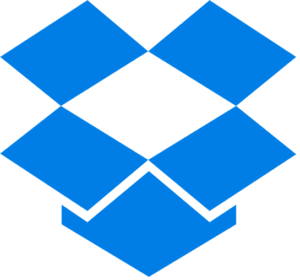Leveraging Word of Mouth Referrals to Create Repeat Business
Referral marketing is one of the most effective forms of marketing. It is the primary factor behind 20 to 50 percent of all purchases. Referrals also generate more than twice as many sales as paid advertising. Referral marketing increases the effectiveness of marketing efforts by 54%, according to Marketshare.
Referred customers are often more valuable over time to a company. The lifetime value (LTV) of a referred customer is 16% higher compared to non-referred customers.
- “One customer, well taken care of, could be more valuable than $10,000 worth of advertising.” – Jim Rohn, Motivational Speaker
- “In sales, a referral is the key to the door of resistance.” – Bo Bennett, Author of Year To Success
People tend to trust their friends and family’s recommendations much more than a paid advertisement. Therefore, customers who are acquired through referral marketing have a tendency to spend two times more than the other customers and refer twice as many people.
It is like the infamous Facebook CEO, Mark Zuckerberg said, “People influence people. Nothing influences people more than a recommendation from a trusted friend. A trusted referral influences people more than the best broadcast message. A trusted referral is the Holy Grail of advertising.” [source] Your friends and family will definitely influence you, especially when it comes to purchases.
When people make purchases, they also tend to look for social proof. They want to know that other people are buying the product. They Google reviews of the product. In fact, BrightLocal found in a consumer study that 88% of consumers read online customer reviews to determine if a local business is good.
Let’s look at some examples of companies that effectively used referral marketing to grow their business.
Dropbox’s Referral Program

Dropbox has grown their business through referral marketing. Their famous referral program gives you and your friends 500MB additional free storage space. This incentive has encouraged customers to refer their friends. Dropbox’s referral program increased signups by 60%, with users directing 2.8 million referral invites by April 2010.
Reasons for Dropbox’s Success:
Before the referral program, Dropbox was using SEM and affiliate marketing. Unfortunately, their CPA was $288-$388 and their product was only $99/year. Therefore, they needed to rework their marketing efforts before they went bankrupt.
Dropbox was inspired by Paypal. They added a double-sided referral program, which rewarded both the referrer and the friend. The double-sided reward sign-ups create lots of social proof through social media. It generates a lot of publicity for the business.
Dropbox used extra storage space for their referral reward. This was something that would be useful to the consumer. The results were great.
Dropbox’s referral program:
- Increased sign-ups by 60%
- In Sept 2008 the service had 100,000 registered users
- In Jan 2010 (15 mos.) the service had 4,000,000
- 35% of daily sign-ups are via the referral program
PayPal’s Referral Program

Paypal knows that people make decisions with their pocketbooks! They incentivized their customers by literally giving their users cash. This is probably only a good incentive for payment platforms.
PayPal’s referral program is one of the more lucrative referral program examples. Referrals fueled PayPal’s 7-10% daily growth, which launched their user base to over 100 million members.
PayPal used to literally pay people to invite their friends to use the platform, according to David Sacks, original COO of PayPal.
As it turned out, rewarding customers had a better yield than traditional marketing channels. Once PayPal achieved a solid base of early adopters, they dropped the Refer-A-Friend bonus. When they reached their target numbers, they dropped the referral bonus for merchants.
Amazon Prime’s Referral Program

Amazon leveraged social proof when it designed its Amazon Prime referral program. When you receive an invitation to join Amazon Prime, they mention who invited you to join. Seeing a friend’s name associated with it makes it worth checking out.
Amazon Prime encourages repeat business. It rewards Amazon customers with free shipping on their purchases. The more they purchase from Amazon, the bigger bang they get for their membership fee.
With Amazon Prime’s referral program, only the advocate gets rewarded. For more established brands, such as Amazon, a double-sided referral program tends to work better.
What makes Amazon’s referral program effective:
- Evocative header image.
- Social proof to makes referred friends feel more comfortable.
- Clear calls-to-action which encourage visitors to quickly take the next step.
- Wide reach– the referral program is open even to non-Prime users.
Starting Your Referral Program
Customers will naturally refer their friends and family members when they experience a store with great customer service and wonderful products. However, you want to ensure that your store is top of their mind and that your customers get the word out to their friends. A formal referral program can help encourage that.
More than 50% of people are likely to give a referral if offered a direct incentive, social recognition or access to an exclusive loyalty program. – Software Advice
- The first step towards getting a successful referral program together for your business is to identify the customers that you want to refer their friends. Think about what motivates these customers. Consider the best way to communicate the program with them. Do they respond well to social media? Email? What are the best times to reach your customers via email? Should you post your program on social media? What are the problems that your business solves for the customer?
- Identify a low-cost item that would motivate your target customers. Make sure that it is something that would be useful to them, but also not break the bank. It could be as simple as a discount on their next purchase. If you follow the Dropbox example, you should offer a dual reward – one for the referrer and one for the friend. This will help to generate new business and stimulate repeat business.
- Create a referral rewards system. Do you want your target customer to earn a reward for each referral or will the referral rewards be tallied in loyalty points that can be accumulated through a variety of methods for a number of products that you sell? How will you track the referrals?
- Change up the referral rewards to get customers excited to come back to your store and discover new things. You can reward customers with a seasonal item. A Christmas keychain or some Valentine’s Day chocolates. There are tons of seasonal items that can motivate customers to refer their friends. Try to make your incentives special and unique. People tend to forget about the referral program, so routinely changing up the reward will give you a reason to notify customers and get them interested in participating again.
About the writer:
Melinda Curle. Melinda is a blogger at ReferralCandy and CandyBar. She loves learning about internet marketing and maintaining her own fitness blog. She enjoys running, swimming, dancing and Pilates.






